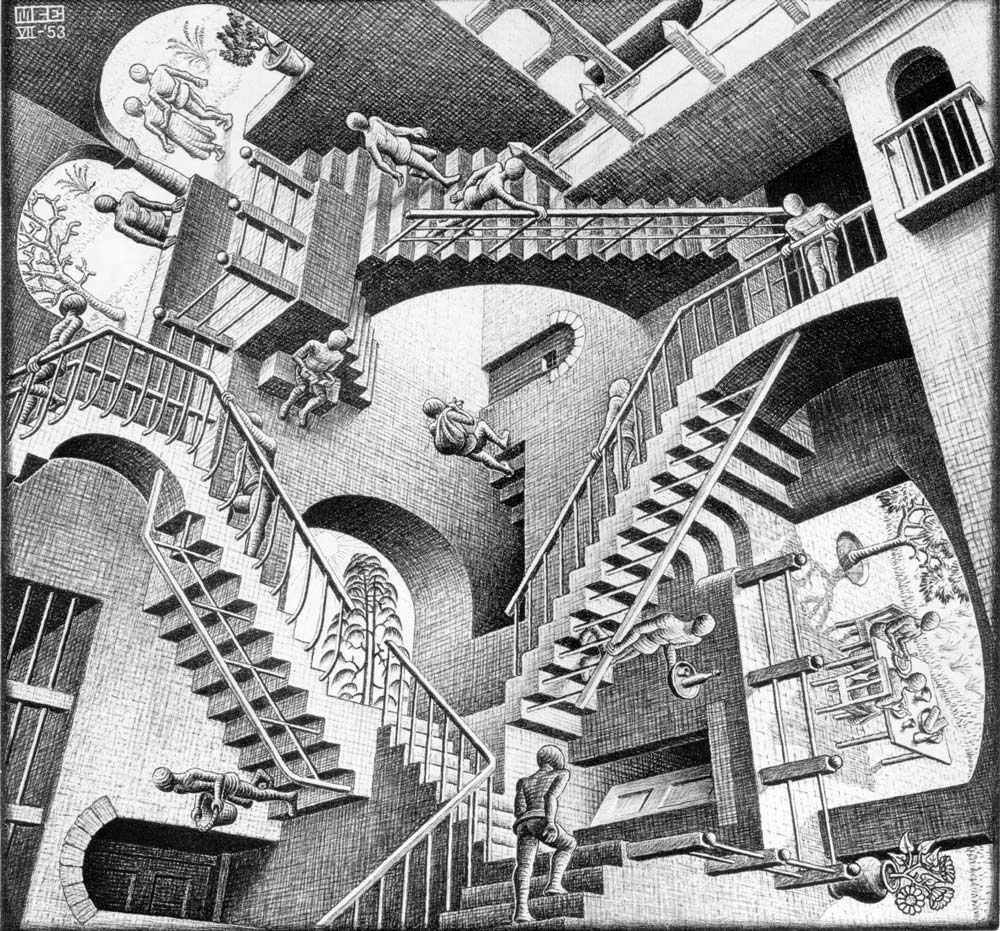| Relativity | |
|---|---|
 |
|
| Artist | M.C. Escher |
| Year | 1953 |
| Dimensions | 10.9 in × 11.5 in |
| 27.7 cm × 29.2 cm | |
| M.C. Escher Famous Paintings | |
| The Waterfall, 1961 | |
| Relativity, 1953 | |
| Ascending and Descending, 1960 | |
| Drawing Hands, 1948 | |
| Sky and Water I, 1938 | |
| Three Worlds, 1955 | |
| House of Stairs, 1951 | |
| Belvedere, 1958 | |
| Another World, 1947 | |
| Complete Works |
Relativity by M. C. Escher is a classic lithograph that presents the visual imagery of a world where the laws of gravity have ceased to exist. This lithograph was first printed in December of 1953, and it has become a legendary work of surrealist imagery.
Surrealism and a 3-Dimensional Concept
It could be stated that this particular work by Escher fuses the art movement of surrealism with a unique 3-Dimensional style. Within the actual imagery of the lithograph is seen an architectural structure that does not adhere to the common rules of gravity. Instead of the common form of gravity known in the real world, the imagery in this work of art reflects different rules of gravity that are segmented into different components of the world in the lithograph.
In a rather mundane way, the people in the work go about their daily lives walking on the stairways in the stairways depicted in a unique world. No one seems to be aware that gravity has different rules for different people and no one in the work seems to be aware of or very much affected by it.
The People in Relativity
The humans that wander the stairs in Relativity are drawn in a faceless, indistinguishable manner. They appear to be little more than cogs in the wheel of the strange world of this artwork. In essence, they are unaware of the world they live in, and they make no unique contribution to it. They are, for all intents and purposes, nameless automatons that go about their daily existence in a robotic manner. Such depictions of humanity are common in the work of Escher.
The black, white and gray colors of the work also reflect a dark future not far removed from speculative science-fiction. It would not be accurate to say the material is bright or cheerful, but the imagery is thought-provoking and allows for introspection on the human condition.